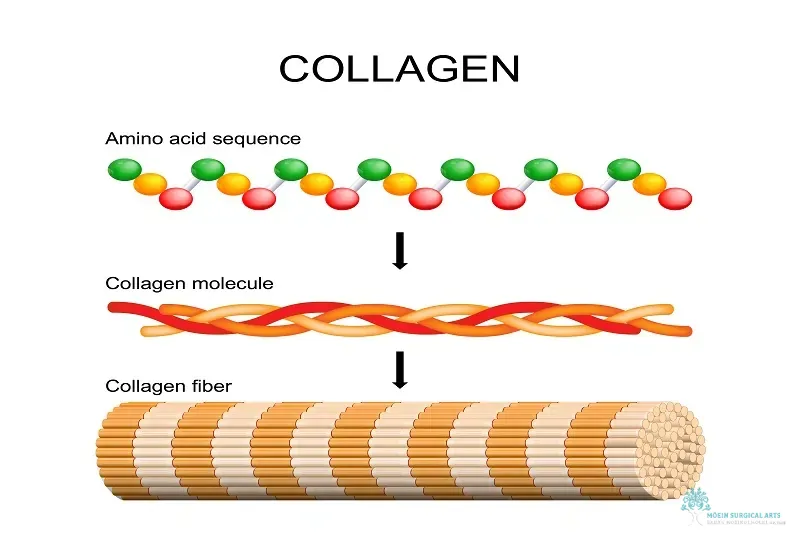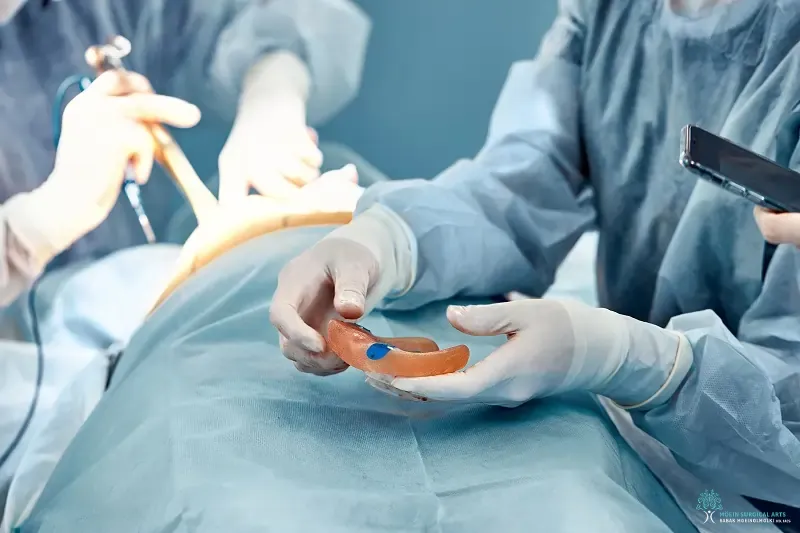
A capsulectomy is a surgical procedure aimed at removing the scar tissue, or capsule, that forms around breast implants. This capsule often develops as a natural response of the body to the foreign object, but in some cases, it can thicken and cause complications like capsular contracture, where the capsule tightens around the implant, leading to discomfort or aesthetic concerns.
In a total capsulectomy, the entire capsule is removed to alleviate these issues, particularly in cases of capsular contracture, infection, or when there are complications such as calcified capsules or ruptured implants. Surgeons typically perform the procedure under anesthesia, making an incision either along the breast fold or through the nipple.
Reasons for considering a capsulectomy may include the need for implant removal or replacement due to discomfort, changes in appearance, or medical concerns. By addressing the scar tissue, a capsulectomy can restore breast aesthetics and health, providing relief from associated complications.
Following breast implant surgery, the body naturally forms a protective capsule of scar tissue around the implant. This capsule is a response to the presence of a foreign object within the body, and its purpose is to isolate and protect the implant. The process begins as the body’s immune response activates collagen production, leading to the formation of a fibrous tissue layer around the implant.

However, complications can arise, notably capsular contracture, which occurs when the capsule thickens or hardens excessively. This condition leads to symptoms such as breast firmness, discomfort, and visible distortion of the breast shape. Capsular contracture is a relatively common complication, affecting approximately 10-15% of patients with breast implants.
While the capsule formed around the implant is usually soft and flexible, issues emerge when it becomes excessively rigid. Managing this complication often requires additional interventions, as the body’s natural response to inflammation can lead to unwanted changes in the scar tissue surrounding breast implants. Understanding this process is essential for anyone considering breast augmentation surgery.

Capsular contracture is a complication that can occur following breast implant surgery, characterized by the tightening of scar tissue around the implant. This condition can arise from several potential causes. One primary factor is the inflammatory response triggered by the presence of the foreign implant, leading to excessive collagen production. The body attempts to encapsulate the implant, resulting in the formation of thickened collagen fibers that may contract and distort the shape of the breast.
Additionally, prior radiation therapy can increase the risk of capsular contracture by causing damage to surrounding tissue, which may amplify the inflammatory response and scar tissue formation. Furthermore, genetic predisposition plays a crucial role, as some individuals may be more susceptible to the development of excessive scar tissue due to inherited traits.
While the exact cause of capsular contracture remains unclear, it is noted that approximately 10.6 percent of breast implant recipients experience this issue. (1) Understanding these contributing factors is essential for risk assessment and patient counseling, enabling healthcare providers to better manage and mitigate potential complications.
Capsulectomy surgery is primarily required for women experiencing grade III or grade IV capsular contracture. These stages are characterized by hard and abnormal breast appearances, along with pain and discomfort, significantly affecting the quality of life. In grade III, the breast feels firm, and in grade IV, the deformity and discomfort are pronounced, often necessitating intervention.
The decision to perform a complete capsulectomy is not taken lightly and depends on individual circumstances, including the severity of the capsular contracture, a thorough evaluation of symptoms, and any underlying health issues related to breast implants. Patients with significant pain or changes in breast appearance from these severe grades may benefit from this surgical procedure to remove the hardened capsule surrounding the implant.
Consultation with a qualified healthcare provider is essential to determine the best course of action, ensuring that each woman's unique needs are addressed when considering capsulectomy. In summary, women suffering from grade III and IV capsular contracture are the primary candidates for this surgery to restore comfort and proper aesthetics.
Breast capsulectomy is a surgical procedure performed to remove breast implants along with the associated scar tissue, known as capsule. The procedure typically begins with the administration of general anesthesia to ensure the patient is comfortable and pain-free during the operation.
The surgeon makes an incision, usually along the natural breast crease, which helps minimize visible scarring. After accessing the breast pocket, the surgeon carefully removes the implant and any surrounding scar tissue.
Post-removal, patients have several options. They may choose to replace the implant with a new one or consider a breast lift to tighten and reshape the skin, especially if there has been significant breast sagging.
Addressing complications is crucial, as hardening of the scar tissue can occur (capsular contracture), leading to discomfort and cosmetic issues. Additionally, some patients may experience health concerns related to breast implants, making thorough evaluation and discussion with a healthcare provider important. Overall, a capsulectomy can significantly impact a patient's health and aesthetic outcome.
Capsulectomy is a surgical procedure primarily aimed at removing the capsule of scar tissue that forms around implants or damaged joints. This operation is often performed in cases of capsular contracture, where the tissue becomes hardened and distorted, leading to pain and functional limitations. There are several types of capsulectomy techniques employed depending on the specific anatomical location and underlying condition.
Each technique carries its own indications, benefits, and potential complications, influencing the choice of approach by the surgeon. Understanding the different types of capsulectomy is crucial for patients and healthcare providers alike, as it can aid in making informed decisions about treatment options, recovery time, and expected outcomes. The following sections will delve into the various types of capsulectomy, highlighting their unique characteristics and applications in clinical practice.
Subtotal capsulectomy is a surgical procedure that involves the partial removal of the scar tissue capsule surrounding a breast implant. This procedure typically requires a smaller incision compared to a total capsulectomy, making it an appealing option for many patients. During subtotal capsulectomy, not only is the capsule addressed, but the breast implant is often replaced as part of the process, ensuring optimal results for the patient.
One of the key benefits of subtotal capsulectomy is the potential for smaller scars, which can enhance the overall aesthetic outcome. By utilizing a more minimal incision, this technique can help maintain a more natural appearance while addressing complications related to scar tissue formation around implants. Overall, subtotal capsulectomy provides an effective option for those looking to improve the condition of their breast implants while aiming for a less invasive solution.
Total capsulectomy is a surgical procedure aimed at removing both the breast implant and the entire surrounding capsule of scar tissue that forms around the implant. This capsule, although a natural response by the body, can sometimes become excessively thick, leading to complications such as capsular contracture, where the scar tissue tightens around the implant, causing discomfort and cosmetic issues.
During the total capsulectomy, the surgeon typically removes the implant and the scar tissue in pieces to ensure a thorough extraction and minimize the risk of complications. This comprehensive approach not only addresses the problems related to capsular contracture but also allows for an evaluation of the underlying tissue.
After the removal of the breast implant and scar tissue, patients may discuss options for replacement implants if desired. The total capsulectomy is an effective solution for those experiencing complications due to their breast implants, ensuring both physical relief and improved aesthetic outcomes.
En bloc capsulectomy is a surgical technique employed by Cosmetic Surgeons to remove a breast implant along with the surrounding fibrous capsule as a single unit. This procedure is particularly beneficial when dealing with ruptured implants, as it minimizes the risk of silicone leakage into the surrounding tissue.

During the process, the surgeon typically makes an incision along the inframammary fold, providing optimal access to the breast implant and capsule. Once the incision is made, the surgeon carefully separates the capsule from the surrounding tissue, ensuring that the integrity of the capsule is maintained during removal. This meticulous approach helps to contain any potential contaminants and provides a cleaner surgical field.
However, it is important to note that en bloc capsulectomy may not always be feasible. If the capsule is too thin or adherent to nearby structures, Cosmetic surgeon may face challenges in performing this technique without risking damage to the surrounding tissues. In such cases, alternative strategies may be utilized for breast implant removal.

surrounding implants or joints. The primary difference is that capsulectomy involves the complete removal of the capsule (scar tissue), while capsulotomy focuses on partially cutting or releasing the capsule to alleviate pressure or pain.
Capsulotomy can be performed in two ways: open capsulotomy, where an incision is made to access the capsule directly, and closed capsulotomy, which typically uses less invasive techniques to manipulate the capsule without large incisions.
On the other hand, capsulectomy can be categorized into three types: en bloc capsulectomy, where the capsule and surrounding tissue are removed in one piece; total capsulectomy, which involves complete excision of the capsule; and partial capsulectomy, where only a portion of the capsule is removed. Each type serves distinct therapeutic goals and is chosen based on the patient’s specific condition and the extent of the scar tissue.
The recovery process after a capsulectomy typically spans about two weeks, during which patients are advised to wear a compression bra. This essential garment helps manage soreness and swelling in the surgical area, promoting comfort during the healing phase.
In some cases, temporary drainage tubes may be used if swelling occurs, allowing any excess fluid to be released. During recovery, it is crucial to avoid strenuous activities and smoking, as these can impede the healing process.
By the three-week mark, many patients can usually return to their normal activities, bringing a welcome sense of normalcy back to their lives. Additionally, once fully healed, patients can discuss the possibility of scheduling implant replacement surgery, if desired.
Overall, following post-operative instructions, including the use of a compression bra and avoiding certain activities, will significantly aid in a smooth recovery from capsulectomy.
In conclusion, a total capsulectomy is a surgical procedure that involves the removal of a breast implant along with the entire capsule of scar tissue that forms around it. This capsule is the body’s natural response to the presence of the implant; however, it can sometimes result in complications, such as discomfort or aesthetic issues. During the procedure, the surgeon typically removes the breast implant first, ensuring minimal disruption to the surrounding tissues. After the implant is extracted, the capsule is carefully excised, which addresses any concerns related to encapsulation, including capsular contracture. Patients may choose this procedure for various reasons, such as health concerns related to their implants or dissatisfaction with their appearance.
Importantly, individuals can also discuss the possibility of replacing the implant during the surgery if they wish to have new implants after the capsulectomy. This comprehensive surgical procedure aims to enhance patient comfort, alleviate symptoms, and provide a fresh start in terms of both breast aesthetics and health. For those considering this procedure, cosmetic surgeon Dr. Moein, based in Los Angeles, specializes in advanced surgical techniques to achieve optimal results. Contact Moein Surgical Arts today at 310-455-8020 to schedule a consultation and explore your options for improved health and aesthetic confidence.
1. Metzinger, S. E. (2022)
Treatment Using Total Capsulectomy and Implant Removal
Plastic and Reconstructive Surgery
Among 100 patients undergoing full capsulectomy with implant removal, 89% reported symptom improvement within three months—indicating a high success rate for addressing capsular contracture and related issues.
(PMC)
2. Katsnelson, J. Y., et al. (2021)
Outcomes of Implant Removal and Capsulectomy for Breast Implant Illness in 248 Patients
Abington Jefferson Health Papers
In a large cohort of 248 patients, 90.4% reported high satisfaction
Following capsulectomy combined with implant removal—demonstrating the procedure can be performed safely and effectively in the context of breast implant illness.
(Jefferson Digital Commons)